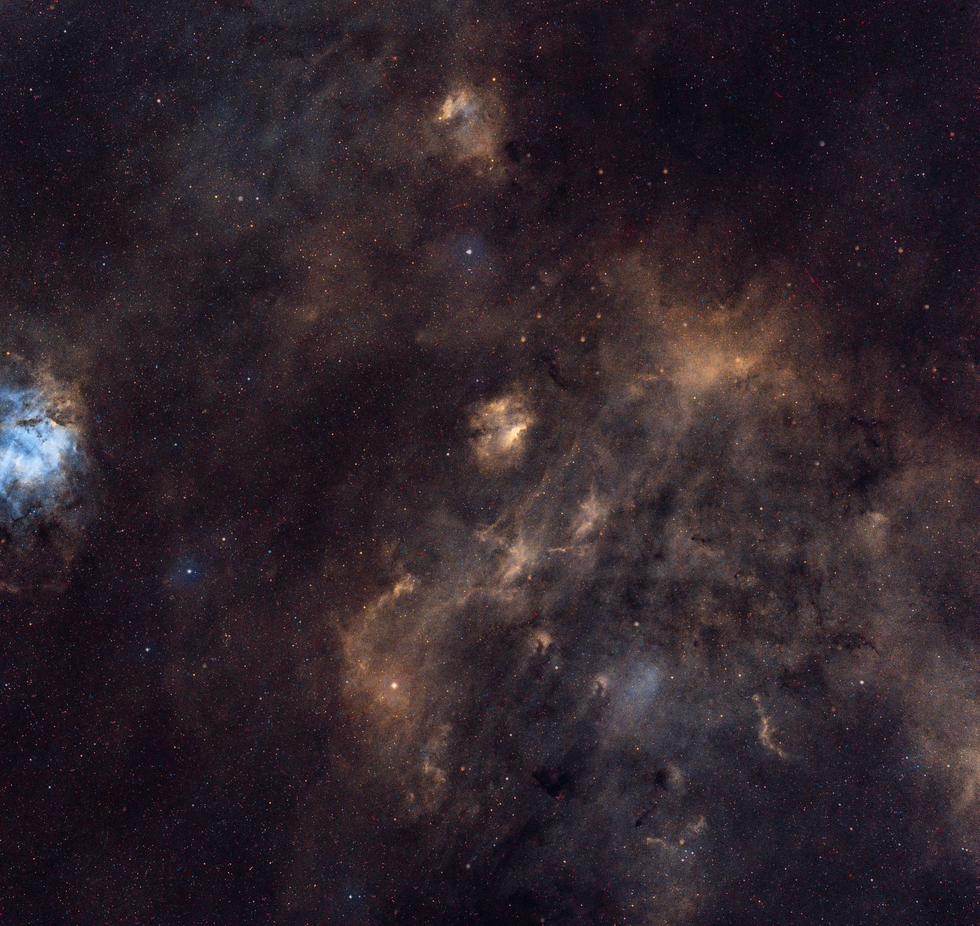Sh2-135
Sh2-135
Sh2-135 is a nebula in the constellation Cepheus.
It is located in the southern part of the constellation, just north of the line that joins the stars ζ Cephei and δ Cephei; The most suitable period for its observation in the evening sky falls between the months of July and December and is greatly facilitated for observatories located in the regions of the Earth's northern hemisphere, where it is circumpolar up to warm temperate regions.
It is an H II region bound to a dark nebula of interstellar dust, showing a pronounced and expanding ionization front; A model that can explain the situation well is the so-called blister model: according to this scheme, the ionized gas is swept away by the ionization front as a result of the interaction between the H II region and the adjacent molecular cloud. The star responsible for ionizing the gases is of spectral class O9.5V. Initial distance estimates have given a value of about 1900 parsecs (about 6200 light-years), while much more recent estimates have given much higher values, in the order of 3100 parsecs (about 10100 light-years). Numerous sources of infrared radiation have been identified around this nebula by IRAS, thus indicating the presence of recent star formation processes; Most of these stars are grouped together in a young open cluster, whose ruling star has a mass of about 7 M☉together with 174 young stellar objects identified with certainty and constituting two main clusters.
It is located in the southern part of the constellation, just north of the line that joins the stars ζ Cephei and δ Cephei; The most suitable period for its observation in the evening sky falls between the months of July and December and is greatly facilitated for observatories located in the regions of the Earth's northern hemisphere, where it is circumpolar up to warm temperate regions.
It is an H II region bound to a dark nebula of interstellar dust, showing a pronounced and expanding ionization front; A model that can explain the situation well is the so-called blister model: according to this scheme, the ionized gas is swept away by the ionization front as a result of the interaction between the H II region and the adjacent molecular cloud. The star responsible for ionizing the gases is of spectral class O9.5V. Initial distance estimates have given a value of about 1900 parsecs (about 6200 light-years), while much more recent estimates have given much higher values, in the order of 3100 parsecs (about 10100 light-years). Numerous sources of infrared radiation have been identified around this nebula by IRAS, thus indicating the presence of recent star formation processes; Most of these stars are grouped together in a young open cluster, whose ruling star has a mass of about 7 M☉together with 174 young stellar objects identified with certainty and constituting two main clusters.
SPECIFICATIONS
Telescope
SPA-1CCD
Camera
FLI PL16083
Location
IC ASTRONOMY OBSERVATORY, SPAIN
Date of observation
27-09-2022
Filters
SHO
Processing
Pixinsight and Photoshop
Credits
Credit Sauro Gaudenzi / Data Telescope Live


